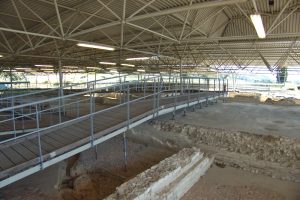
The Romans left many traces in our territory, but many of them are not as famous as they should be. Historically, the Roman period in Le Marche started in 295 BC with the Battle of the Nations in Sentinum (now called Sassoferrato, which hosts the yearly re-enactment of the battle). They took over the so-called Ager Gallicus: the coalition of Samnites, Etruscans, Umbrians and Senone Gauls eagerly tried to win them but in the end, the Roman army was too strong.
Among the remains that should be promoted better, there is the extraordinary archaeological site of Castelleone di Suasa. The Battle of the Nations did not happen far from here, and that’s why the Romans soon created a trading post here. Suasa, which became a municipium around the 1st century BC, was indeed in a strategic position; it was on a branch of the Via Flaminia, the Roman lane that connected Rome to Fano. The municipium developed very quickly during the first century AD, and ended up in having the second largest amphitheatre in the area (the first one was in Ancona), a Forum Romanum and a theatre.
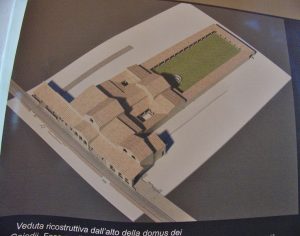
Domus Coiedii
In Suasa there were also very wealthy people, and as an example of that, the Domus of the Coiedii Family is there to be visited. The guided tour can be done also in English, and be prepared to be caught by the astonishing parts of this villa. They must have been really rich people, by measuring the size of the 3000 square meters villa, right opposite the Roman Forum, and by watching the renovation they made from the 1st century BC to the 2nd AD.
At the entrance of the villa we immediately find the bedrooms: very small rooms, as the average Roman man usually was not more than 1.50 m tall. Here the mosaic is simple, but well preserved as much as the other rooms.
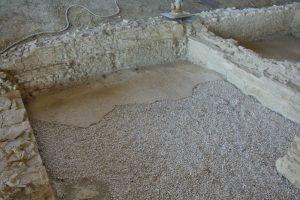
Right after the bedrooms there was the atrium with a compluvium that caught the rainwater. They also had a garden with swimming pool… not bad at all!! Thanks to the mosaic floors we can understand the importance of the rooms: the guests’ bedrooms contain a beautiful floor, more elaborated than the other rooms. The dining room must have been the most important place in the villa, since the floor here was made of Carrara’s marble (Tuscany) and some other special stones. Another proof of the exceptional wealth of this Coiedii family; Lucio Coiedio Candido, one of his member, was a Roman senator under the Emperor Claudius. They even had private bath systems, and they continued to make changes up until the 3rd century AD.
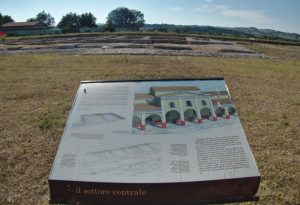
The Forum
But the archaeological site is not over! After the fall of the Roman Empire, the last inhabitants left this place in the 6th century, so there were some other places to discover. Unfortunately, during the raids of the Goths, Suasa lacked a defense wall or other security measures, and that’s why the Roman remains served as a quarry for Castelleone. It was not until the 1980s that the Roman site was discovered when plowing. Since then, the archaeological faculty of the University of Bologna has been working on the site, bringing to light more and more unique pieces.
The site has a Roman street between the Forum and the houses, remains of the forum (it has not been dug out completely) and some other remains. In the site there are also some painted walls from the 2nd century BC in the first Pompeian style. This style was characterized by painting the walls so that it looked as if they were covered with coloured marble. Some other beautiful remains can be seen at the Museo Civico Archeologico di Suasa.
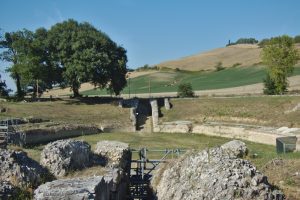
The Roman amphitheatre Suasa
The visit usually ends by the amphitheatre, which was always outside the city, because people were also bothered by hooligans.
The mosaics are maybe the highlight of the visit: the guide rightly remarked that those Roman mosaics were more developed in terms of technique than the later Byzantine of Ravenna. Indeed there was clearly more movement in the Roman figures, even the different muscles of the human body were trying to represent by the Romans.
- Roman paintings first Pompeian Style
- paintings Roman fisrt Pompeian Style
- roman oil lamp
- Archeological Museum of Castelleonde di Suasa

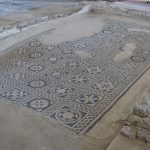

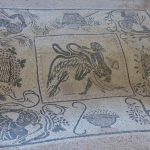


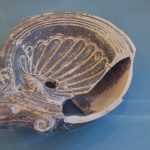
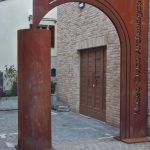
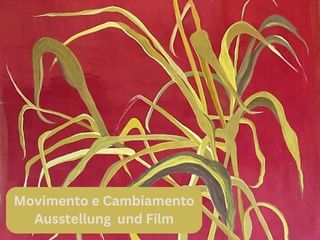


0 Comments